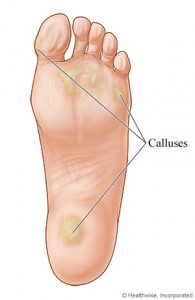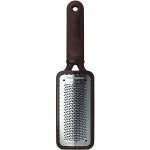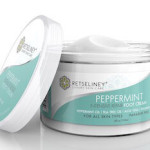Best Way to Remove Calluses from Feet
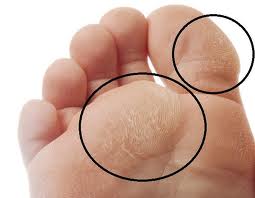 Calluses ordinarily show up where the skin much of the time rubs against something, for example, a bone, something like footwear, or the ground. It normally shapes over the hard range under the toes – area of the skin which takes individual’s weight when they are walking or standing. While it may feel like a callus is something additionally, added to your skin, it’s quite a development of what’s there.
Calluses ordinarily show up where the skin much of the time rubs against something, for example, a bone, something like footwear, or the ground. It normally shapes over the hard range under the toes – area of the skin which takes individual’s weight when they are walking or standing. While it may feel like a callus is something additionally, added to your skin, it’s quite a development of what’s there.
Our skin has various layers of various cells types. The top layer is a layer of solidified, dead cells. This outermost layer is more often than twenty-five cells thicker, and it continually replaces itself as the top cells chip off to be supplanted by new dead cells underneath. In this article, I discuss the best way to remove calluses from feet. First, I explain why and the risks of calluses, and then I share 15 different treatments to help you remove calluses immediately!
Quick Comparison Guide for Treating Calluses
At CallusGuide.com, we have put together a table with some quick comparisons of the best callus removers:
Quick Reference Corn and Callus Remover Guide
| Category | Product | Description | Rating | Price |
|---|---|---|---|---|
| Best Electric Remover | 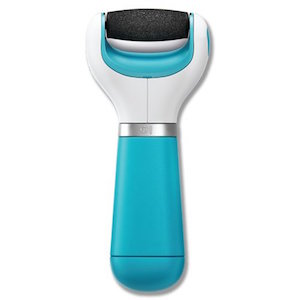 | - Easy to use - Needs 4 AA batteries - The cylindrical head spins 360 degrees |  (5 / 5) (5 / 5) | |
| Best Manual File Scraper | 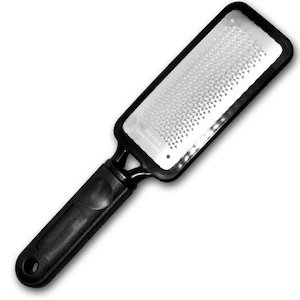 | - Perfect solution for dry, calloused and cracked heels - Large yet light weight design - Gives equally good results on both dry and wet foot surfaces |  (5 / 5) (5 / 5) | |
| Best Callus Gel Remover | 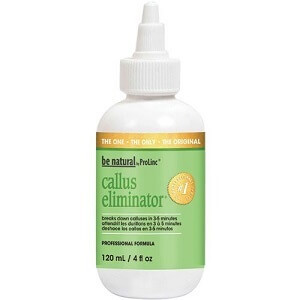 | - Does the work for you - Breaks down calluses in 3-5 minutes - Simply file or buff calluses away |  (5 / 5) (5 / 5) |
3 Basic Risk Factors for Calluses
Risk factors are something which multiplies the probability of adding to a condition or sickness. The accompanying risk components are connected to a higher occurrence of calluses:
- Bunions, hammertoe: Bunions, hammertoe and other foot issues and deformations – a bunion is a strange, hard knock that buildup on the big toe. A hammertoe is the point at which a toe gets to be nestled like a claw.
- Old age: elderly ones have less greasy tissue in their skin, which can bring about less cushioning and a higher danger of having calluses, particularly on the chunk of their foot.
Causes of Calluses on the Feet:
Callus development is activated by pressure or scraped spot. The heel of your foot as it rubs inside your shoe, in case you’re doing a considerable measure of hard work with your hand or foots are great illustrations of this. If your skin is liable to an irregular measure of erosion, the layer of dead cells increases. New dead cells are included speedier than the old ones slough off. This can develop the external layer from about twenty-five cell thicker to over a hundred cells thick. You’ve grown a callus.
Anything that brings about more amounts of friction or pressure on the skin can make calluses to buildup.
- Badly fitting shoes: the shoes might be too tight or too loose (rubbing/erosion). Check out our guide on the best shoes
- Socks: either not wearing any socks or having socks that don’t fit properly.
- Walking barefoot: if done frequently, the skin will thicken in order to protect itself. Also repeated activities on the feet- running or strolling in an odd way can bring about calluses.
Check out some of these images for calluses that can appear on your feet.
15 Treatments to Get Rid of Calluses on your Feet
If the calluses have been created by monotonous activities, avoiding those actions will most likely take care of the issue – having defensive cushions and other self-care measure likewise helps a lot. If the callus does not leave, or keeps on being excruciating in any case, the accompanying treatments might be of help:
Creams: Some creams might be prescribed to rehydrate the part of the body with additional tough skin.
Trimming: The specialist uses a hawker to trim a substantial callus. A podiatrist might remove a portion of the hard skin that encompasses the callus so that the focal point of it can be uprooted.
Salicylic acid: Subsequent to trimming the specialist might apply a patch with 40% salicylic corrosive. The patient should supplant the patch occasionally. A metal nail file or pumice stone is generally used to rub away dead skin before applying another patch.
Foam wedges: These might be utilized for callus on the toes to lessen pressure. In some cases silicone wedges might be utilized.
Antibiotics: An anti-infection salve might be used to decrease the danger of disease.
Orthotics: These are specially designed cushioned shoe embeds which might assist individuals with a foot deformity.
Drench your feet or the Affected area in warm water for ten minutes: The skin ought to begin to soften. You might include Epsom salts if you like, but not necessary.
Using foot file to scrub your calluses: Be certain to occasionally clean the file. Don’t excessively clean your feet. You need to gradually bring down the callus over a month or so. If you start to feel some pain after you have removed a few layers of skin, stop. Check out this article on why a foot file might be good, and also check out our article on what are the best callus remover products.
Wash your feet or the affected part: Ensure that you tidy up the greater part of the dead skin.
Use aspirin to soften your calluses: Squash five tablets of aspirin and blend them with one-half teaspoon (3 g) of lemon and water. Apply the subsequent paste to the influenced zone, and then wrap it with a warm towel. Leave it for around ten minutes and after that remove the towel and Scratch off the calluses with a pumice stone.
Using baking soda: One of the most ideal ways you can treat calluses is with a warm-water and soak. This softens the dead skin and assists with mending. Add 3 tablespoons baking soda to a bowl of warm water and drench – 9 is Baking soda pH and is along these lines soluble and can disturb the skin obstruction.
Chamomile tea: Putting your feet in chamomile tea can be mitigating and will briefly change the pH of the skin to dry out sweaty feet. The tea will recolor your feet; however the stain can be effectively get rid off with cleanser and water.
Use cornstarch: Sprinkle cornstarch between your toes to keep the affected area dry and shield the skin from breaking down. Dampness can make callus feel powerless and can advance contagious contaminations. This is more precaution than anything and ought to be utilized to take out discomfort.
Use vinegar: Put a cotton ball in vinegar and tape it to your callus. Leave the vinegar- cotton on overnight. In the morning, rub the zone with a pumice stone.
Make use of pineapple: Pineapple peel contains certain organic catalysts which help in softening calluses and expelling them from the skin. Place a little bit of new pineapple peel over the affected part of the body and wrap it with a clean cloth. Do this consistently for a week. You can likewise apply pineapple juice to the callus.
Check Out These Treatment Videos
The video below explains a natural method to soften up calluses on the heel so that it is easier (and less painful) to remove. You can try this method before others.
The video below explains how to use a over-the-counter peel (from Amazon, for example) to remove a callus on your feet.
Another video discussing methods to remove calluses. Worth a look as well.
Conclusion
Calluses generally aren’t a major issue, but under some circumstances, they can turn into an issue. In extreme cases, calluses get too thick to treat at home and should be dealt with by a podiatrist. At times when this happens it cause weight redistribution or can get tainted, particularly if they crack. The best treatment is counteractive action, obviously! I hope you found this guide on the best way to remove calluses from feet useful.


